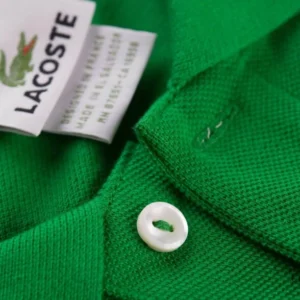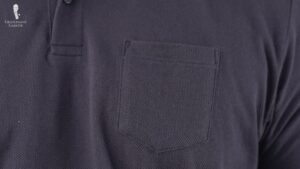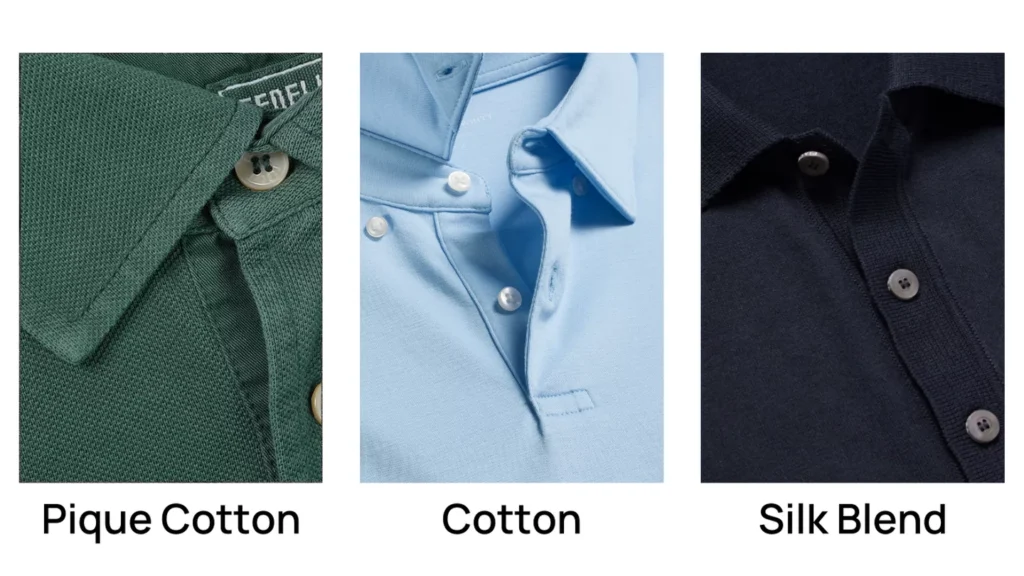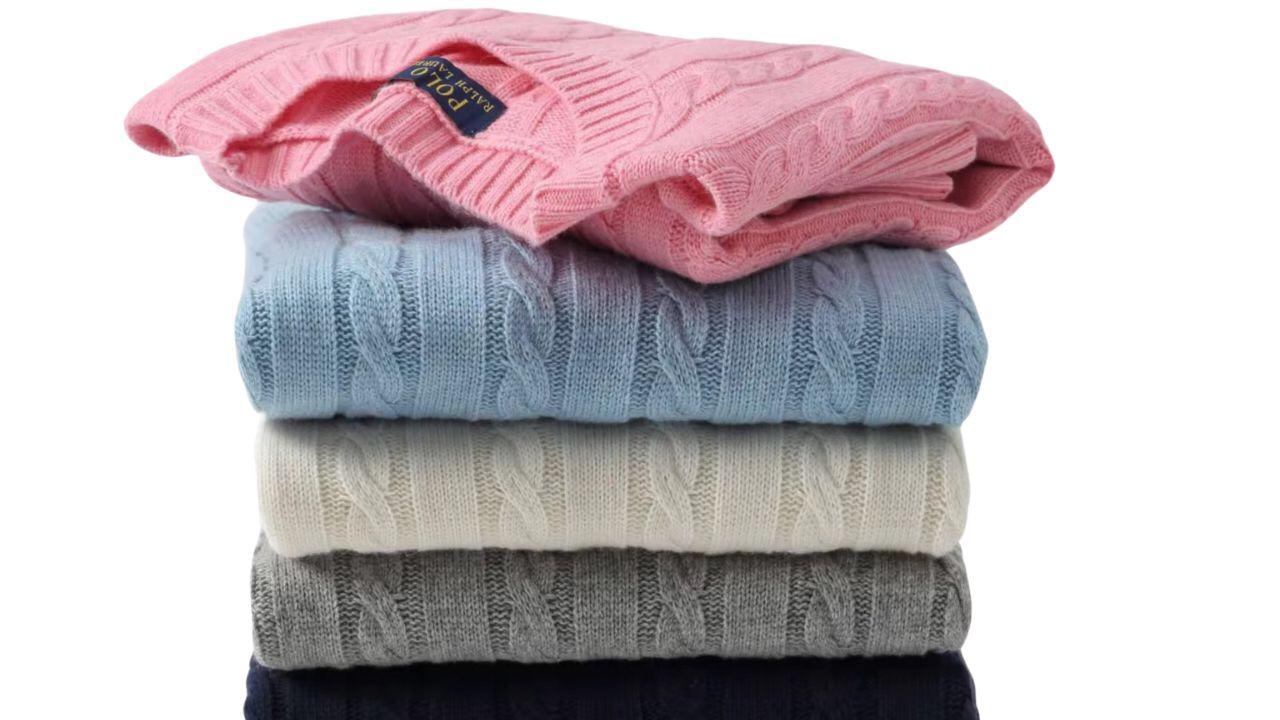When clients come to me looking for a go-to garment, I often put them in a polo because it’s one of those rare pieces that bridge the gap between casual and semi-formal. In my years of working in style consulting, I’ve found few items as versatile and timeless as the polo.It’s not just for men—women too can explore different types and styles, as this classic shirt was designed for everyone. I’ve seen wardrobes grow in function just by adding a few shirts that are paired well and thought through. A comprehensive guide like this helps highlight the often-overlooked facets of the shirt—its history, how it can help your wardrobe, and how to get the most benefit from each owned piece. The comfort it brings during warm weather is unmatched, and the styling options make it an essential part of any closet. You’ll never regret investing time in understanding how to style your own collection. My personal go-to for smart-casual dressing involves a classic navy polo tucked into light khaki chinos—a look that consistently delivers subtle polish and practicality.
Men’s Polo Shirts – The Ultimate Guide Powerful Fact
Nail the perfect look with polos that fit right, feel great, and never go out of style. Express Stitch Industries brings you best polo shirts built to last.
Polo Shirt Mistakes Most Men Make
- Many guys make the mistake of picking oversized or tight shirts—a proper fit should gently hug the arms and torso, avoiding any crumple, squeeze, or loose feel.
- Avoid layering a polo with any undershirt, whether long-sleeved or short-sleeved, as it ruins the structure and comfort of the shirt.
- Don’t wear your polo while laying around and expect it to hold shape—it’s a fitted shirt, not loungewear.
- Choose small, tone-in-tone logos or none at all. You’re not a billboard, and large, visible, or atrocious logos only invite the wrong kind of attention.
- Though some brands like Ralph Lauren still offer polos with loud designs, unless it’s your work uniform, it’s better to skip them.
- A gray or heather polo hides dark, protruding, or even a visible nipple better than a basic white one.
- Balance your proportions—the bottom hem should fall between your button line and your breast, matching the shape of your frame.
- Don’t pop the collar—that outdated trend doesn’t look smart. Use sunscreen for protection instead.
- Wearing a blazer over a polo can work, but only if the collar lays flat; otherwise, go with a proper dress shirt for formal situations.
- Skip trying to make a fashion statement at a bar or acting like the teenagers in the crowd—instead, wear colors that complement rather than clash.
In sporting or active settings, choose a lightest, knit, soft shirt in cool tones to stay comfortable and appropriate.
Polo Shirt History and Evolution
The history of the polo shirt is both rich and surprising. It began in asia, where a game called polo was played for centuries before being introduced to europeans. When the british empire expanded into india during the middle of the 19th century, soldiers stationed in manipur observed the locals playing in traditional uniforms. These were worn during matches and were made of very thick cotton with broad collars, which were often loose and uncomfortable. To fix this, players adopted buttons to secure the collars. This small change would help define what we recognize today as the classic polo shirt. The british later took this concept back to europe, and it slowly spread, being refined over time into the modern shirt we know.
I learned early in my menswear journey how important understanding the roots of a garment is before recommending where and how to Choose Right Clothing Vendor. Knowing what makes a traditional polo and how it has evolved through examples like the Cut and Sew Manufacturer Services is essential for quality and fit. If you’re thinking of creating your own line, it helps to know How to Find Clothing Vendors who understand the history and importance of this item. Polo shirts have been through many versions, and each one tells a story—from ancient india to today’s global market. Though they may look different now, their DNA is still linked to that early adoption of practicality and style. The name “polo shirt” might even imply sport alone, but it represents a global style icon that’s closely tied to social shifts, textile tech, and even national identity.
The Best Polo Shirts
When choosing the best polo shirts, it’s important to consider not just the brand, but how they fit, the fabric, and their functionality. A quality shirt should fit like a glove—not too tight, not too baggy, but just right. From my experience working with clients, the best polos enhance your physique, hide small imperfections, and still look incredibly polished. Whether you’re dressing for a relaxed occasion or layering under a jacket, the versatile nature of polos makes them a wardrobe essential. Choose short-sleeved versions only—long sleeved polos have no place in a well-built wardrobe.
To find the perfect polo, take advantage of a few smart steps. Start with a clear list of what you need—price, fabric, and fit should all be part of your selection process. Buying without thinking through these factors can leave you with something that doesn’t feel functional or suit your style. Look for hallmarks of a great garment—breathable fabric, balanced cut, and durable construction. A good polo can be worn on multiple occasions and works well with other parts of your outfit. I always put together a guide to help my clients, compiling a quick, practical checklist to follow. When you make thoughtful choices, you’ll end up with polos that fall perfectly within your desired style and stand up to real wear. This is where leveraging your options and knowing what to look for really gives you an advantage.
Polo Shirt Color Selection

credits:mensfashioner
When it comes to choosing the best colors for your polo, you should always start with black and navy. These two shades give the most versatility and will complement nearly any skin tone or body type. I always tell clients to choose smart basics first—gray, brown, olive, or even heather can work well if you’ve already got your essentials covered. From there, you can go for brighter shades that look good on you, depending on your natural tone. The idea is to build a wardrobe where everything works together effortlessly and nothing clashes. That’s why I avoid prints like plaids, patterns, or stripes—they’re tacky, too much, and rarely age well.
You don’t need too many polos, but what you get should be strong in basic color foundation. Stick with what works, and don’t worry if you’re not sure what to try first—just choose pieces that match your lifestyle. Polos are already such a staple that it’s worth having a few that truly give you options for any day. If you’re building out a lineup, these core shades will take care of the rest, especially if you want to mix with jeans, chinos, or shorts. And definitely remember: some colors may seem bold, but if they don’t fit your overall look, they won’t help. I’ve universally found that those who keep it clean with color do it just right.
Choosing the Right Fabric

credits:mensfashioner
Understand the Fabric Basics
When selecting a polo shirt, your fabric decision can have a huge impact on how the shirt looks, fits, and feels. I’ve worked with many men over the years, and one thing is clear: choosing the right fabric isn’t just about price—it’s about how the material responds to your body, your style, and your lifestyle. Cotton is always a popular choice for its softness, breathability, and comfort, but it’s not without flaws. Cheaper types can fade, shrink, or develop pilling after a few washes. For a sleeker finish, silk or silk blends offer a more lustrous appearance, but they can be delicate, especially in high heat or moisture. Polyester and synthetic materials, often found in performance polos, bring benefits like moisture-wicking and odor control, but they may lack breathability and feel unappealing against the skin.
Match the Fabric to Your Frame
In my experience, guys with larger frames tend to benefit more from pique knit fabrics. The textured finish offers a subtle airbrushing effect, helping to mitigate any problem areas like the stomach or chest without clinging. On the other hand, slimmer builds can go for lighter, more flexible fabrics that highlight their shape in a flattering way. Linen and jersey knits, for example, have a casual, breathable feel, though linen tends to be rougher and better in blends. If you’re shopping on a budget, blended or poly-cotton shirts are more affordable, though they may feel stiffer or make you sweat more. I’ve found that you should avoid anything too tight or too heavy, especially if you’re prone to overheating.
Fabric Function and Lifestyle Fit
Always consider what your day looks like. If you’re mostly active, performance polos with tech features like UV protection, silver particles, or durable construction might be best. For a day at the office or weekend events, cotton pique or lightweight knits give you that clean, polished look without sacrificing comfort. The key is knowing when to use each fabric and how it aligns with your needs. Take the time to choose with intention, and your polo shirts will last longer, fit better, and feel great every time you put one on.
Sleeve Styles That Matter
When it comes to sleeves, most men are used to the short sleeved polo shirt—it’s the preferred option today and the standard in contemporary menswear. But that wasn’t always the case. The original polos were long sleeved, a style that made a quiet resurgence in recent decades, especially with standout pieces like the Friday Polo by Luca Avitabile. I’ve personally enjoyed seeing this shift, as the long sleeve offers a greater range of style for cooler seasons or more formal looks. Comfort and movement are key, and the kind of sleeve construction you choose makes a difference. The two most commonly seen types are set-in and raglan sleeves. Set-in sleeves have a seam at the shoulder and sit flush with the trunk of the garment, creating a clean silhouette.
Choose the Right Sleeve for Your Fit and Function
- The raglan sleeve extends in a single piece to the collar, forming a diagonal cut across the shoulder.
- This design reduces stress on the joint, offering greater flexibility—perfect for casual or sports use.
- It’s often employed in higher-end polos because of its functional and stylish benefits.
- Over the decades, I’ve seen that well-made classic sleeve styles remain relevant when thoughtfully revived.
- There are many types and variations, from rugby shirts to polos with modern cuts, showing the sleeve is a subtle but important detail.
- A good sleeve affects how the shirt moves with your body, how it holds shape, and what it adds to daily wear.
- Understanding construction, fit, and style will guide you in choosing what works best for your lifestyle and the occasion you’re dressing for.
Collar Construction
- Most polo shirts feature a soft, ribbed collar designed to encourage airflow, but they can become flimsy, wrinkle, or curl at the edges over time.
- I’ve found that some companies offer adhesive stays to fix this problem, but they often don’t work well.
- If possible, opt for a collar that comes with interlining, which gives a more genuine, neater, and trimmer appearance.
- These collars appear sharper and are better suited for more refined styling, especially when clean lines matter.


credits:gentlemansgazette
- You can also select different types of collars, such as set or broadly set, for expanded options and better fit.
- Designs that are similar to traditional dress shirts often hold their structure better and enhance overall style.
- In my experience, the collar can affect how you feel in your outfit—it’s a subtle but good way to boost confidence.
- We always recommend shirts that actually perform well and last, especially if you wear polos often.
Identify a Quality Polo by the Buttonholes

One of the easiest ways to assess the quality of a polo shirt is by looking at its buttonholes. A well-made buttonhole should be neat, tidy, and free of loose threads, whether it’s machine-sewn or hand-sewn. I’ve seen plenty of shirts with poorly-made holes that are distorted or messy, and that always takes away from the overall appearance. You should always expect a clean cut, and ideally no fraying around the buttonholes. Many of the best polos leave the top 1-2 buttons unbuttoned, which not only frames your face better but also looks stylish and relaxed. If you find lots of dangling threads or uneven stitching, that’s a red flag in the construction. The way a brand handles small details like buttonholes says a lot about the care they put into the garment. In my experience, those that have great, strong finishing at the placket tend to be the ones you’ll still be wearing with pride seasons later. You want a shirt that will be solidly built and last, not fall apart while you’re leaving the house.
Pocket Functionality


While some polo shirts come with a breast pocket as a design feature, I usually suggest skipping it unless you actually plan to carry something small, like your sunglasses. In most cases, a superfluous pocket doesn’t add value and can spoil the clean lines of the shirt. Over time, especially with age and wear, these pockets often become saggy, wrinkly, and lose their shape. From what we see, the pocket can start to drag the fabric, making the shirt look sloppy rather than polished. So, if you are planning a sharp look, it’s better to avoid anything that they don’t need to be there. A polo is all about streamlined style, and your outfit will look sharper with a neat front—no pocket, no problem.
A Note on Tails

Back when polo shirts were first designed, they had a longer tail in the back, often called a tennis tail, meant to keep the shirt tucked during play—a detail that contributed to their sporty appearance. But in modern styles, most designers are getting rid of this feature, and to be honest, I think that’s a plus. From what I’ve seen, that extended part can look off, especially if it’s more than 2 inches longer than the front, which it often is. I advise you to skip the tail altogether—99.9% of the time, it just doesn’t look great. If your polo has one, make sure it’s modest in length, but even then, I usually tell clients to get one without a tail. This is because that extra flap doesn’t help your style, and in casual wear, you want your outfit to feel natural. The tail may have worked originally, but now, it doesn’t fit with how you move or dress day to day. And if you’re like me, you’ll really appreciate a cleaner hem that keeps things simple and sharp—no fuss, just a solid, well-fitted shirt that works for any time or place.
Everyday Polo Outfit Ideas
If you’re thinking of new ways to style a polo, there are many great outfit ideas that work for different occasions, from business to casual, or even sporty looks. For a casual day out, I recommend pairing a classic navy or white polo with chinos or jeans—add sneakers, loafers, or sandals depending on your mood and the weather. To smarten it up, throw on a blazer or bomber, and if you want to layer, go with a light jacket. For those warmer months, shorts work well, and for cooler settings, tailored trousers or dark wash pants can bring a more elevated style. A belt and a clean pair of low-top or no-show socks will give that polished finish. If it’s hot, swap the fitted shirt for a performance or athletic cut to stay comfortable.
Dress It Up: Polo in Business & Semi-Formal Looks
For a business casual approach, I suggest a charcoal suit or gray wool trousers with a custom polo tucked in—add dress shoes, heels, or flats if you’re a woman, and don’t forget minimalistic jewelry for a more refined touch. This works really nicely for events where you want to look formal, but not too overly dressed. From my experience, the right combos of color, style, and confidence are what make an outfit perfect. Whether you’re heading to work, wondering how to mix your wardrobe for a semi-formal evening, or just trying to look your best, there are always stylish ways to make your polo a standout piece. Just avoid over-accessorizing, and remember: fitted always looks better than overly loose.
Caring for Your Polo Shirt
- To extend the life of your polo shirts, follow proper care routines that help maintain the fabric.
- When washing, always choose cold water, a gentle cycle, and avoid harsh detergents that can damage the quality.
- The best drying option is air, but if you have to use a dryer, select a low-heat setting to protect the material.
- After washing, either fold neatly or hang your polos to avoid wrinkles.
- Store them in a cool, dry place, away from direct sunlight to prevent fading and preserve durability.
- I’ve found that small steps like this really help to maintain the shirt’s original look and keep it looking its best.
- Skipping these steps or using harsh treatment will wear your shirts out faster—so use the right approach and treat your polos with care.
FAQ
Is a 'polo' a brand or a type of shirt?
It’s actually both. The word “polo” refers to a classic style of shirt featuring a collar and buttoned placket. At the same time, “Polo” is also a famous clothing brand by Ralph Lauren, which popularized this shirt style worldwide.
How a Polo Shirt Is Different from a Regular T-Shirt
A polo shirt and a regular t-shirt may seem similar, but they are quite different in style and use. A t-shirt usually has a round neckline, no collar, and no buttons on the front. It gives a relaxed and casual feel.
On the other hand, a polo shirt typically has a collar, also known as a polo collar, and a placket with buttons on the front. This gives it a more polished look. It’s often referred to as a smart-casual shirt, allowing you to wear it in formal or semi-formal settings.
The polo shirt looks neater and more stylish with its design. The collar helps it stand out compared to the plain t-shirt. That’s why many people choose polos when they want to look good without wearing a full dress shirt.
In my own experience, switching from a t-shirt to a polo shirt made me feel more confident. It’s still comfortable but looks much better, especially for outings or casual workdays.
Are men's polo shirts suitable for formal occasions?
Men's polo shirts have a casual feel and are typically worn in relaxed settings, not for formal occasions. They aren’t suitable for a suit or dress shirt combo but work for business-casual dress codes. These items aren't smarter or dressier, just a step above a regular shirt.
Which Brand Really Makes the Best Polo?
The best brand for a polo shirt really depends on what you need it to do. If you expect high quality, be ready to pay more for luxury brands that use expensive materials and offer attentive, constructive design. In my opinion, such polos feel like an iconic item in menswear, especially when the value is clear at that price point.
Some brands offer great value, while others focus on making their polo shirts status symbols. I always determine what matters more to me—style, comfort, or durability—before choosing. To help you explore, check out us extensive series like “Is It Worth It?
What Makes a Pique Polo Different?
A pique polo shirt is made from woven cotton fabric that has a textured surface and a breathable quality. I like it because it feels cool and lasts long, unlike smooth polos.












Leave a Comment
Your email address will not be published. Required fields are marked *